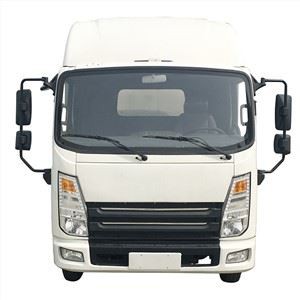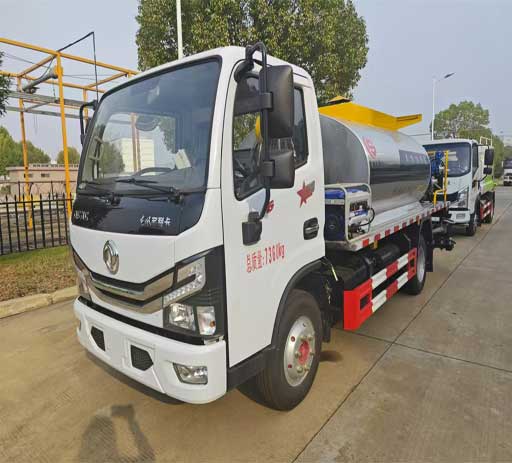How Long is an Extended Cab Truck? A Comprehensive Guide

Introduction
When it comes to choosing the right truck, understanding cab configurations is essential. One of the most popular options among truck enthusiasts is the extended cab. But how long is an extended cab truck, and what defines its dimensions? This article delves into the specifics of extended cab trucks, including their dimensions, features, comparisons with other cab styles, and practical tips for potential buyers. Whether you’re considering an extended cab for work or recreational use, this guide will equip you with all the knowledge you need.
What is an Extended Cab Truck?
An extended cab truck is a type of pickup designed to offer more passenger space compared to a regular cab. It features additional rows of seats behind the front seats, providing extra room for passengers or storage. The design is particularly popular for families and professionals who require both cargo capabilities and passenger space.
Typical Dimensions of an Extended Cab Truck
The length of an extended cab truck varies by model and manufacturer. On average, an extended cab truck can measure from 205 to 240 inches in overall length. However, the extended cab portion adds an extra few inches compared to a regular cab.

Table: Average Dimensions of Popular Extended Cab Trucks
| Make and Model | Overall Length (inches) | Cab Length (inches) |
|---|---|---|
| Chevrolet Silverado 1500 | 231.7 | 59.4 |
| Ford F-150 | 228.9 | 59.5 |
| Ram 1500 | 229.0 | 58.4 |
| Toyota Tacoma | 225.5 | 58.3 |
Features of Extended Cab Trucks
Extended cab trucks come with various features that cater to users looking for both comfort and functionality. Here are some notable features:
Seating Capacity
Most extended cab models accommodate up to five to six passengers easily. The rear seats are typically designed for secondary use, making them perfect for short trips or additional space when needed.
Storage Options
With the back seats folded up or down, extended cab trucks provide practical storage solutions for tools, sports gear, or luggage. Some models also include under-seat storage compartments.
Versatile Cabin Layout
The layout of an extended cab allows for versatility, making it suitable for various activities, whether it’s hauling materials for work or taking the family on a weekend getaway.
Comparing Extended Cab Trucks to Other Cab Styles
There are three primary types of truck cabs: regular cab, extended cab, and crew cab. Understanding these different configurations can help you make an informed decision.
Regular Cab
A regular cab truck features two doors and a single row of seating. It typically offers the shortest overall length, ranging from 190 to 220 inches. Regular cabs are ideal for those who prioritize cargo space over passenger capacity.
Pros and Cons of Regular Cab Trucks
- Pros: Easier maneuverability, lighter weight, better fuel efficiency.
- Cons: Limited passenger space, fewer amenities.
Crew Cab
Crew cab trucks have four full-size doors and a spacious cabin, providing room for up to six passengers. They’re generally longer than extended cabs, measuring between 225 to 250 inches in length. Crew cabs are ideal for larger families or those who frequently travel with multiple passengers.

Pros and Cons of Crew Cab Trucks
- Pros: Maximum passenger capacity, ample storage space, great comfort.
- Cons: Heavier, may have poorer fuel efficiency compared to regular and extended cabs.
Extended Cab Overview
- Pros: Balanced passenger and cargo space, reasonable length, generally better fuel efficiency than crew cabs.
- Cons: Less rear space than crew cabs, rear seating may not be suitable for longer trips for adults.
Choosing the Right Extended Cab Truck for Your Needs
When selecting an extended cab truck, consider your specific needs. Here are practical tips for making the best choice:

Assess Your Space Requirements
Think about how many passengers you’ll need to transport regularly. If you frequently travel with more than just one additional person, consider opting for a crew cab instead.
Evaluate Your Cargo Needs
Your truck’s ability to handle cargo is crucial, especially if you’re using it for work. Look at the bed size and payload capacity alongside cabin dimensions.
Consider Fuel Economy
Extended cab trucks typically offer better fuel economy than crew cabs but may not be as efficient as regular cabs. If fuel cost is a concern, look for specific engine options that provide better mileage.
Test Drive Different Models
Nothing beats hands-on experience. Visit dealerships and take various extended cab trucks for a test drive. Pay attention to comfort, visibility, and how well you can access rear seats.
Common Misconceptions About Extended Cab Trucks
With the popularity of extended cab trucks, several misconceptions persist. Here are a few clarified:
Misconception: All Extended Cabs Have the Same Size
Many believe all extended cabs are the same length. In reality, sizes vary significantly among different manufacturers and models.
Misconception: Extended Cabs Are Only for Families
While they provide additional seating, extended cabs are also favored by tradespeople for their capability to transport tools and equipment efficiently.
Maintaining an Extended Cab Truck
Proper maintenance ensures your extended cab truck remains in good shape. Here are some maintenance tips:
Regular Service Checks
Perform routine oil changes, brake inspections, and tire rotations. Adhering to the manufacturer’s maintenance schedule helps increase the longevity of your vehicle.
Interior Care
Keep the interior clean by vacuuming regularly and using appropriate cleaning solutions for upholstery. This will enhance comfort and keep the cabin looking new.
Exterior Protection
Apply wax periodically to protect the paint and maintain the truck’s appearance. Rust prevention treatments can also prolong the life of your vehicle’s body.
Frequently Asked Questions (FAQs)
1. How many people can fit in an extended cab truck?
Most extended cab trucks can comfortably seat between five to six passengers.
2. Are extended cab trucks good for families?
Yes, they offer a balance of passenger and cargo space, making them a viable option for families.
3. How do I know if an extended cab truck is right for me?
Consider your passenger requirements, cargo needs, and comfort preferences to determine if an extended cab truck suits your lifestyle.
4. What are the average bed sizes for extended cab trucks?
Extended cab trucks typically have bed lengths ranging from 5.5 to 8 feet, depending on the model and manufacturer.
5. Do extended cab trucks have a smaller turning radius than regular cabs?
Yes, usually extended cabs have a wider turning radius than regular cabs due to their longer overall length.
6. What is the difference in price between an extended cab and a crew cab truck?
Typically, crew cab trucks are more expensive than extended cabs due to the added size and features, but exact pricing depends on the make and model.
